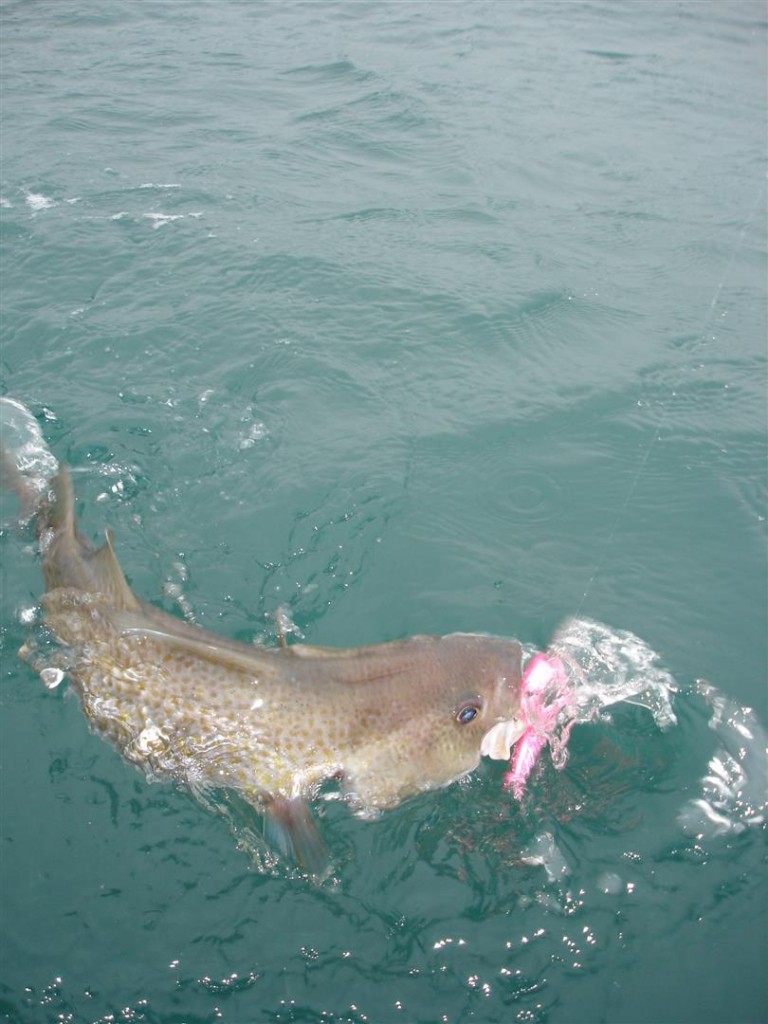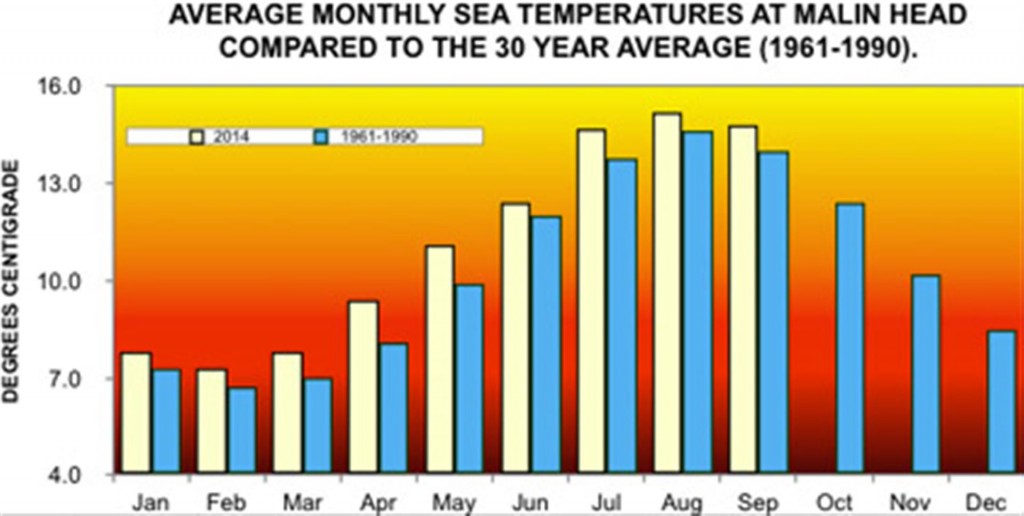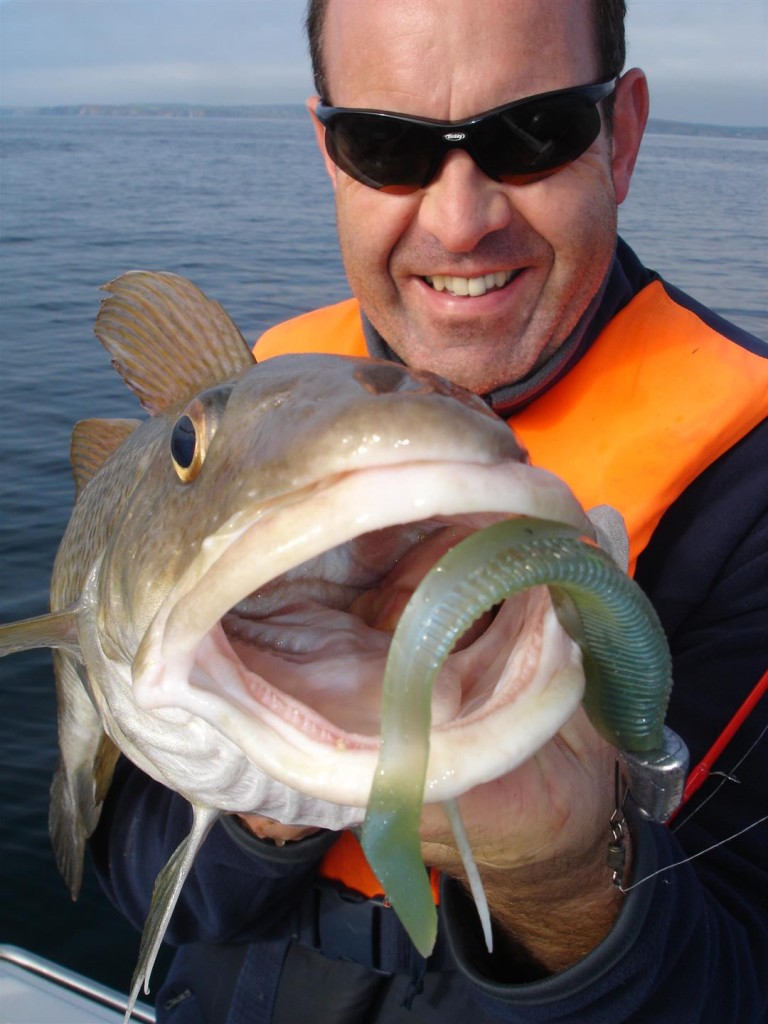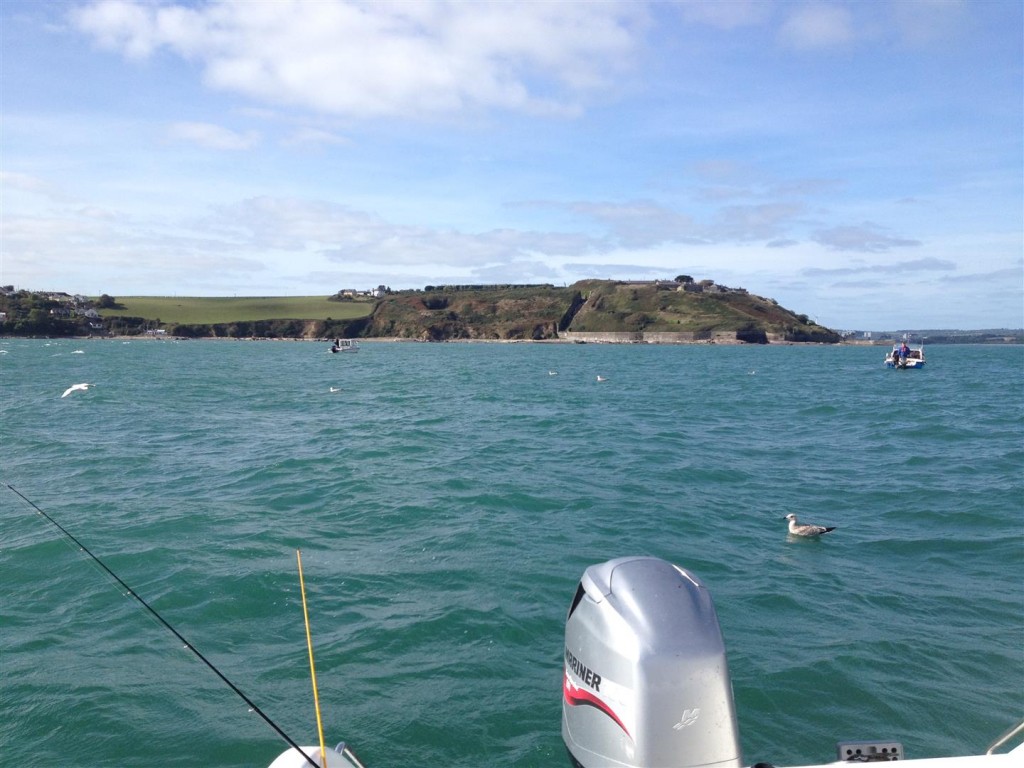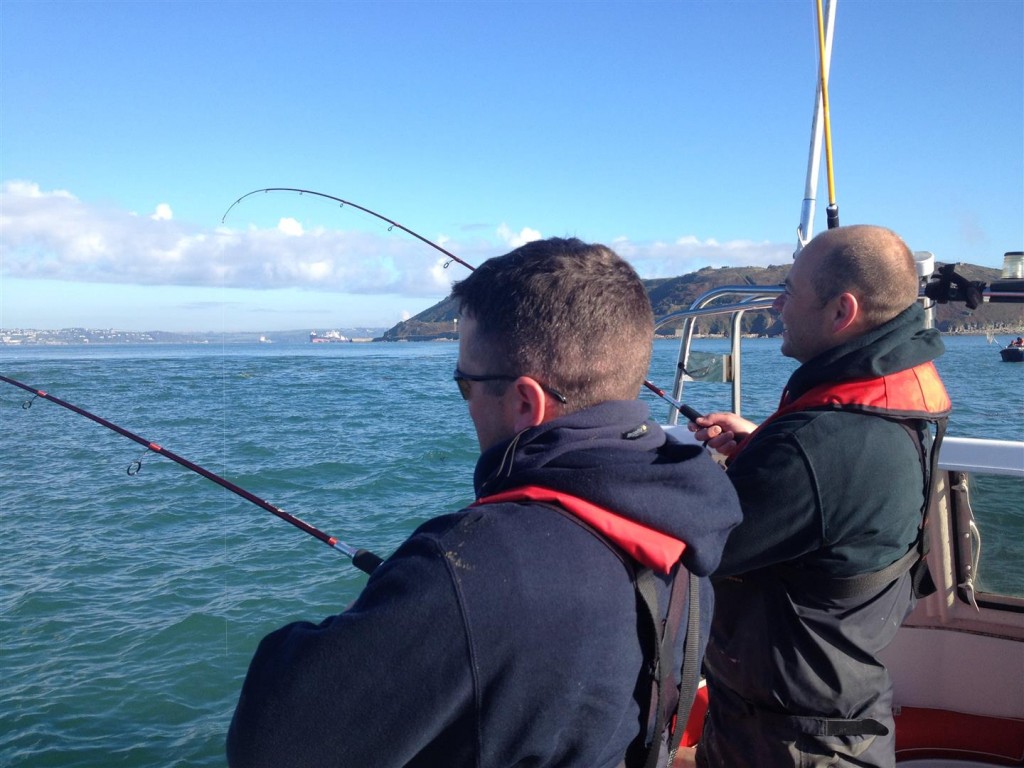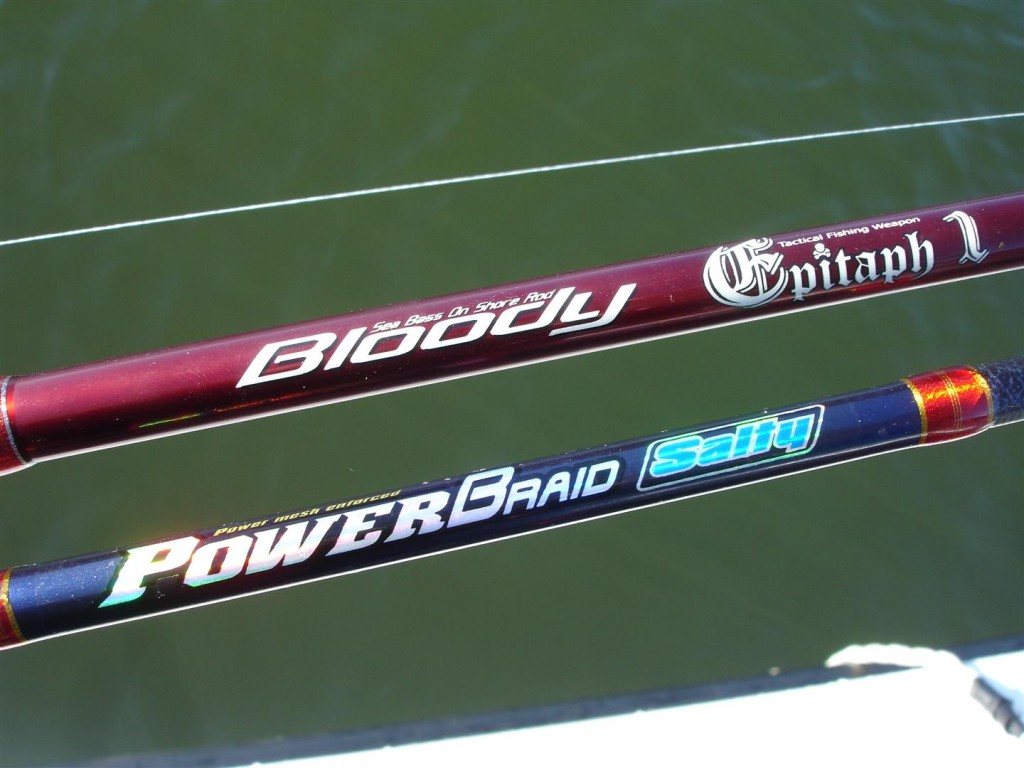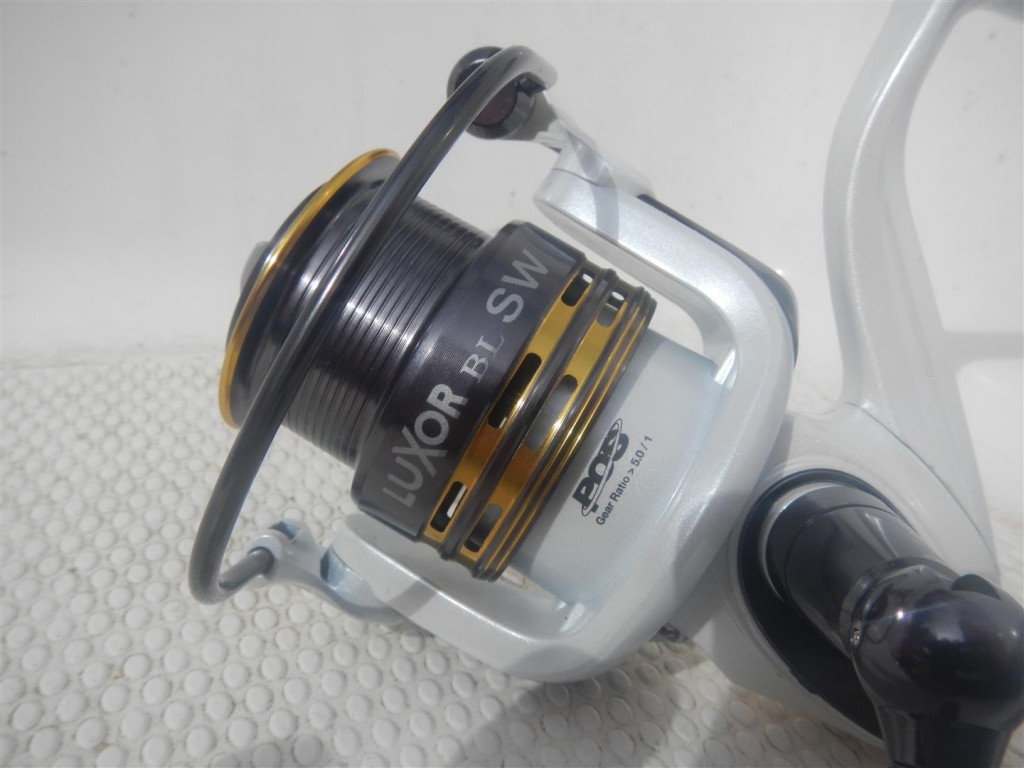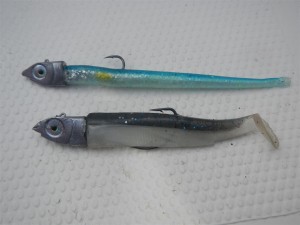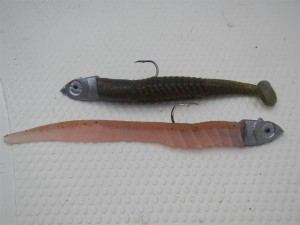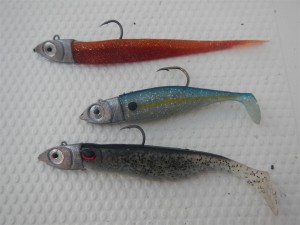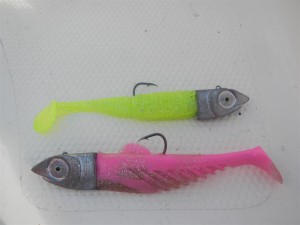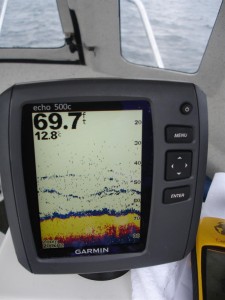Fancy a change from bait? How about targeting winter cod with lures? It is great sport when the conditions are suitable...
 (Click on any picture to enlarge!)
(Click on any picture to enlarge!)
The Lure of Winter
As autumn fades into colder winter on land there still is some time to get some decent action. The lag in water temperature is something anglers should not forget. While it can be chilly and in single figures it may take it another months for sea water temperatures to dip into single figures.
Met Eireann, the Irish Meteorological service give a great indicator of trends in Irish sea temperatures. You can see from the picture that our sea water winter does not really get into swing until December. In short there is lots of fishing to be done before things begin to become bleak.
If there is one thing to be remembered with sea angling in winter time it is this: Quality trips are much better than quantity of trips. Make the trips count and wait until conditions are right before committing yourself to a fishing session. We have all done it – headed fishing in conditions that are onot ideal and arrive home later disillusioned at the lack of fish or the poor conditions. Experience would have told you to stay at home. Over the years I have learned to trust my experience in things salty. True there are times where you get your notions wrong and suffer because of it but in general experience will serve your well.
For the winter lure anglers there are always a few considerations in you must consider before going fishing. Firstly you should consider the target species – are they around at this time of year? Are they around in enough numbers to be a viable target? Take bass for an example – most bass vacate the shoreline as the water temperatures drop to their lowest. While bait anglers may be successful and catch some bass the lure angler is being really optimistic in hoping to target bass. Similarly the shore based lure fishermen that wants to fish through the winter had better be prepared to revel in the solitude and beauty of the coastline and not be too concerned about catching fish! Pollack, wrasse and just about all the usual suspects will be driven off the shoreline by winter storms ruining water clarity and the plummet in temperatures. It is important to note that as long as we are not having too many storms and too severe cold that the lure caught fish will hang about well into November.
So what are the alternatives for getting your plastic pulled? The easiest option is to get yourself on the water be it on a boat or kayak. Again depending on decent conditions there just may be fish to be tempted on lures all through the winter. Deeper water marks where water clarity is kept reasonably clear will still hold pollack and coalfish. Wrasse will still hang about on deeper reefs and of course the occasional ling will snaffle a soft plastic with gusto. South coast of Ireland based lure anglers will hope for the arrival of some autumn/winter cod. If the run happens then anglers will be gifted some sport that will last them right into the new year and into the months for February and March – Winter how are ya!
While pollack or wrasse may not faze the average lure angler cod may just pose a bit more of a problem. To the budding lure angler that does not get afloat too often or maybe is only just getting into this branch of the sport. While lure angling can become an all consuming passion for some for others it is just another string to their bow and a useful addition that has them catching fish in winter time, a time when usually they would not venture out without a decent quantity of bait. I cannot stress enough – the conditions must be perfect! If the fish cannot see your lure it will not be able to find it easily and therefore your chances of catching will be minimal. Fishing when conditions are not right will only serve to dent your confidence in both your ability, the technique and ultimately your equipment.
So what do you need to get amongst the cod this winter? You can have all the best gear in the land but if you do not have the right location you are wasting your time and effort. You need to tap into some of your bait fishing comrades to see if they are catching on specific reefs. It is better to target fish on specific features like reefs or banks rather than drifting on “cod ground” if you can find pods of fish on these reefs or banks then mores the better. After that you will need the ability to drift these marks accurately. Once you have all this down, there is only the areas of technique and equipment to get right!
Nowadays you have the luxury of having the choices of lure rod available to suit all budgets. Lets face it though, talk of different rods for different styles of fishing lures is hard to take on board. Realistically anglers are looking for a rod that will accomplish as much of their lure angling as possible in one or two packages. Luckily there are very inexpensive rods about that are really suitable for purpose.
On the cheapest end of the scale you have the Surecatch Salty Braid rods, The HTO Lure Game rods and others. The mid-range rods would be something like the Teknos rods from Grauvell, The Hart Poison or Bushido ranges, the Gunki Hayashi range from Pezon et Michel and of course the beautiful Sakura Shinjin Neo. On the high end of things you would have the Illex Element Riders and the occasional Red rod. The Abu Garcia RockSweeper deserves an honourable mention as a high end low price rod. Most of these come in at a rating around 10g-30g but I would think it is best to disregard the manufacturers ratings. Get to your local shop and get a feel for the rods or better again talk to an angler that is already using one of these rods before you decide to purchase. Believe me you cannot imagine the importance of the having the correct rod. It will have you enjoying your fishing more due to you being in contact with your lures and also with your fish.
I would suggest that you begin with a rod like the Sure Catch Salty and then leave natural progression take its toll as you move up the scale depending on how much you like the techniques and how much success you have. Try and settle on a rod that will suit your fishing. I like seven foot rods, I have no lure rods that are over eight feet. These rods suit my boat angling and are still able to deal with very occasional shore angling. If you are a shore angler do not discount the shorter rods. It goes against the grain compared to the ten foot rods we used use but if you have not tried these short rods out in anger I would recommend that you try them on the water with a lure attached. You will be pleasantly surprised.
I have drifted from 4000 sized reels toward lighter 2000-3000 sized reels. Again here I look for decent quality without going overboard on the price front. I will be happy to get more than two seasons out of my reels and most of my current reels are on the go at least three seasons. I have gotten great service from my Surecatch Unity 30 reels. I have not seen them in the shops of late so I would have no problem going for a Sakura Alpax as it is an identical reel in a different colour. I have gotten great service from a Penn Battle 2000 and similarly a Luxor BL FV 300 SW is serving well though it does not get as much use as the Surecatch. Whatever your reel choice choose one that is as light as you can. If you are going to be lure fishing for a long period of time light and balanced gear prevents the onset of fatigue.
We are starting to get to the nitty gritties of the ultimate tackle set up for inshore cod fishing. Your reel will have to be spooled with braid. Far from using any old braid or trying to use heavier breaking strains it is important to use braid that is “strong enough” but also has the “thinnest diameter” possible. Of course the whole breaking strain and diameter “thing” opens another hornets’ nest – Us line is described differently to European lines and also getting a diameter reading on a line that is largely flat is difficult. Still you have to start somewhere! I like to use 20lb braking strain in as close to a diameter of 0.13mm as is possible. You will find that this will put you into the realm of the more modern “super braids”. I have used Strikepro Strikewire at 0.13mm without any issues, same goes for Suffix 832. There are nice Grauvell Jinza braids – The Trek is good but a bit thicker and the Nash 8x is an 8-strand braid that stands up with the best and is well priced. The reasoning for 20lb braking strain is that we are trying to achieve a balance between strength and thinness. We will need the strength to give some forgiveness when snagged but we want the thinness to allow us to less weight to get and keep contact with the bottom.
If vertical fishing can be described in one line this would be it: “You will not catch unless you are on the bottom. If you are on the bottom you will lose your gear”. Vertical fishing for cod is all about feel. You must be able to “place” your lure at all times. In other words you must know that your lure is on or very close to the feeding zone and this feeding zone is inevitably on or close to the bottom.
To have and hold the bottom and to do this while drifting means selecting a weighted lure that will get and connect with the bottom but will also allow you to get the best out of your rod (and ultimately your lure) and also get the best out of the fighting fish. The combination of rod, line, lure and speed of drift will determine what weight you need. Every rod has its “sweet spot” at which it fishes well. Once you go above the sweet spot the rod will gradually become overloaded and the action of your wand will be destroyed. If you need heavier weights that destroy the action of the rod it is usually time to go home. You can of course get a slightly heavier rod and begin again!
Let us look at two likely scenarios – The Harbour/estuary and the Inshore reef. Most harbours are gifted with some degree of tidal flow and this tidal flow will usually win out over all but the strongest winds. Once you decide on the area you wish to drift you will need to take a stab at what jig head is going to put you in the zone. I prefer to start light and work my way up rather than starting heavy and working down. I’ll usually start with somewhere between 25g and 40g depending on the speed of drift. It would seem that 25g is a weight that suits the setup that I use in moderate drifting conditions. The decision that could wreck you head is the simple decision – what lure will I choose?
We are dealing with cod. Cod are voracious hunters and when there are a few of them about they will attack anything that passes that looks like food. Competition makes them not fussy! So your choice of lure will usually be determined by whether the fish are biting or not. Chances are I will start out with a paddle tail lure of around 130 – 150mm. I will pick a bright colour like pink or orange. There is one thing for sure – I will not use an expensive lure. It will be a lure that will have a nice action but does not cost a pile. Think Illex Nitro shads, Yum Lil Suzies, Berkley Power bait Minnow or Shads… Basically any reasonably priced shad will do! Stick baits will also catch cod – no problem so if you have plenty of senko-style lure use these too. Yum make a lovely worm. Hart have choices in the stick bait category that are well priced. Illex Nitro Jerks are brilliant if you can get them. I generally like to start with a paddle tail and I’ll move on to a stick bait if the drift is brisk or the fish are not biting on the shad (That rarely happens!). What is the major difference between a stick and paddle tail? Resistance! In areas with greater tidal flow or in quick drift conditions it takes more effort to keep a paddle tail on the bottom. It can be often worth the change to help keep contact with the bottom.
Once you are in contact with the bottom you need the get the lure out of the snagging zone. This is done with a deft twitch of the wrist. So your progression through the drift is one of keeping your lure off the bottom but as close to the bottom for as long as you dare – It seems simple but to do it successfully will need more concentration that you can imagine. One lapse in concentration or you can just be unlucky and bang! Lure gone! On the other hand the reward for getting it right is a solid thump and immediate head banging – a typical cod fight.
Anybody that tell you that cod don’t fight well has probably never had one at the end of a lure rod. Cod will get their head down and will make decent runs and the head knocking is unmistakeable. One of the greatest fish I have had on a lure rod was a 16lb cod caught on a reef four miles offshore in around 100 feet of water. It was some tussle! Enough to make you want to do this again and again!
Want to see the techniques in action? Check out the videos!
